We’ve all seen Iridescent and Interference effects when viewing soap bubbles, oil slicks, flower petals, bird feathers, and more. They are fairly common in the natural world. If they are somewhat less common in artwork, it might simply be that they still represent new and unexplored possibilities for most people, even after being part of the artists’ palette for many decades at this point. What follows are some suggestions that can hopefully open up avenues of creativity and expression for those coming to these pigments for the first time, or even for those already somewhat familiar with them but looking for novel and unique applications. In terms of how the pigments themselves actually work their magic, an interesting topic in its own right, see the section on Iridescent Mediums in the following Just Paint Newsletter:
Just Paint 2: Iridescent Mediums – Understanding their unique qualities
As with any new technique, some experimentation and playing might be needed when learning how to use iridescent and interference paints, as they do not behave like regular pigments with mixing and in general use. In this article, I’ll outline some of the basic information you will need to know to begin working with them.
Helpful Hints about Interference Colors
The initial important and helpful things to know about most of the Interference colors are:
- They are very translucent and reach their maximum intensity when fully dry.
- The color effect is angle dependent. At very oblique angles over a white or pale valued color, the compliment of the main interference color can be seen. So, for instance, Interference Red can also appear greenish, Interference Orange, bluish, and Interference Green, reddish. This “flip” cannot be seen when the Interference colors are over a dark valued color, such as black, or if blended with dark valued colors.
- The strongest color effect is with a thin application over a dark valued color, such as black.
- They can be mixed and blended with other colors.
- When blending with very light valued and opaque colors such as Titanium White, keep additions very small. Adding too much will cause the pigments to all but disappear and the interference effect will be blocked.
- Mixing with darker valued pigments will make an infinite variety of more intense iridescent colors that can also become opaque, yet maintain a strong iridescence.
- You can blend them with any translucent acrylic medium to create translucent iridescent/interference glazes.
Mixing with Iridescent and Interference Colors
While Iridescent and Interference colors can certainly be used by themselves to create many different effects, the colors and textural effects are multiplied many times over once you start blending in various Mediums, Gels , and acrylic paint colors. While you can blend them with just about any regular paint color, you will find that lighter valued and more opaque pigments such as oxides and cadmiums, will require a bigger addition of Iridescent color to create the same intensity you could get with a more translucent color family such as Quinacridones or Phthalos.
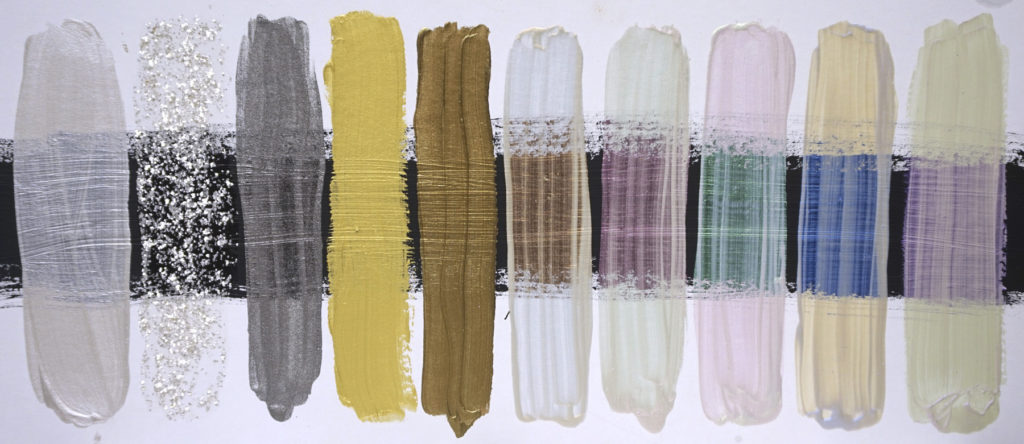
Here is the same sample board with a different light angle showing the full interference and iridescent effects.
You can see that Iridescent Pearl creates the brightest reflectance. This is because it is reflecting all the visible wavelengths of light, showing a bright white metallic like effect. The Interference colors reflect just a small portion of the wavelengths, showing singular colors at a certain angle, and a complimentary color over white. Iridescent Pearl is very useful in creating a huge range of iridescent colors simply by blending with any of our regular acrylic paint colors, other than whites or pale gray like colors, which tend to block the iridescent effect.
All Iridescent colors will tend to lighten regular paint colors in mixtures, with Iridescent Pearl having the maximum effect in this regard. This can be used as an alternative method of tinting a color, where you also create a very different surface effect.
Mixing with the Interference colors is a bit different. If you blend an Interference color like Interference Violet with a similar hued color like Dioxazine Purple or Quinacridone Violet, then you will accentuate and heighten the “violet-ness” of those colors. It is possible to create very intense colors that can have an almost Fluorescent like effect but without the fugitive nature of Fluorescent pigments.
Mixing Opposites
You can also mix opposites such as Interference Violet with a Green or Yellow color like Permanent Green Light, Phthalo Greens or Hansa Yellows. Yellow, as a hue range, is typically very light in value so will tend to hold back the Interference effect to some degree; you’ll have to add more to get a more pronounced effect. This is similar with any lighter valued and more opaque color. Traditional color mixing sense tells us that when you combine complimentary or near complimentary colors, they cancel out and make browns and grays. This is true for regular pigments but not so with Interference pigments. It seems counter-intuitive, but you can have complimentary colors in the same paint film. This does not work if you blend several Interference colors, only one Interference color with a regular color or blend of regular colors. It is hard to imagine until you see it. It is also hard to photograph, as the effects are angle dependent, so I have included several angles of each sample in the photos.
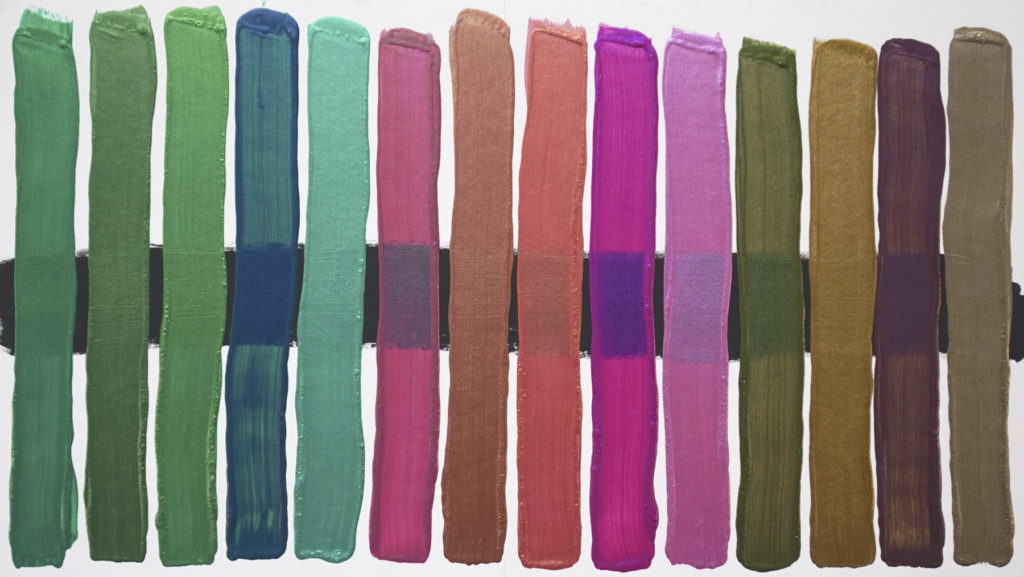
Here is the same sample board with a different light angle showing the full interference and iridescent effects.
Ratio of Color to Acrylic Gel or Medium
The next variable to play with is the ratio of acrylic binder to pigment. This is done by adding in various acrylic Mediums and Gel Mediums. A little bit of Iridescent pigment can go a long way, and extending with Mediums is a key part of learning how to get the most out of them. Additions of Mediums will help you modulate the level of iridescence to just where you want it for your particular use, and to assist in beautiful layering effects via more translucency.
As more medium is blended in to the more concentrated Iridescent color blend, the translucency and subtlety of the iridescence increases as well. Matte and Semi-Gloss Mediums and Gels will have a very beautiful, softer iridescent effect, while Gloss Mediums and Gels will be more pronounced and more translucent. More opaque mediums such as our Pumice Gels will yield very interesting results due to the rough surface texture that scatters the light.
Layering with Iridescent and Interference Colors
While you can use our Iridescent colors right from the tube or container for layering, you will find a wider range of possibilities by using them blended with various Mediums and Gel Mediums which allows for more control over the translucency of the films. While there is no limit to the number of layers you can use, at a certain point the effects may become muddled. There is something to be said for simplicity, and one Iridescent glaze spread out on a surface with a planned range of values and colors underneath can yield intense and wonderful color effects with one stroke.
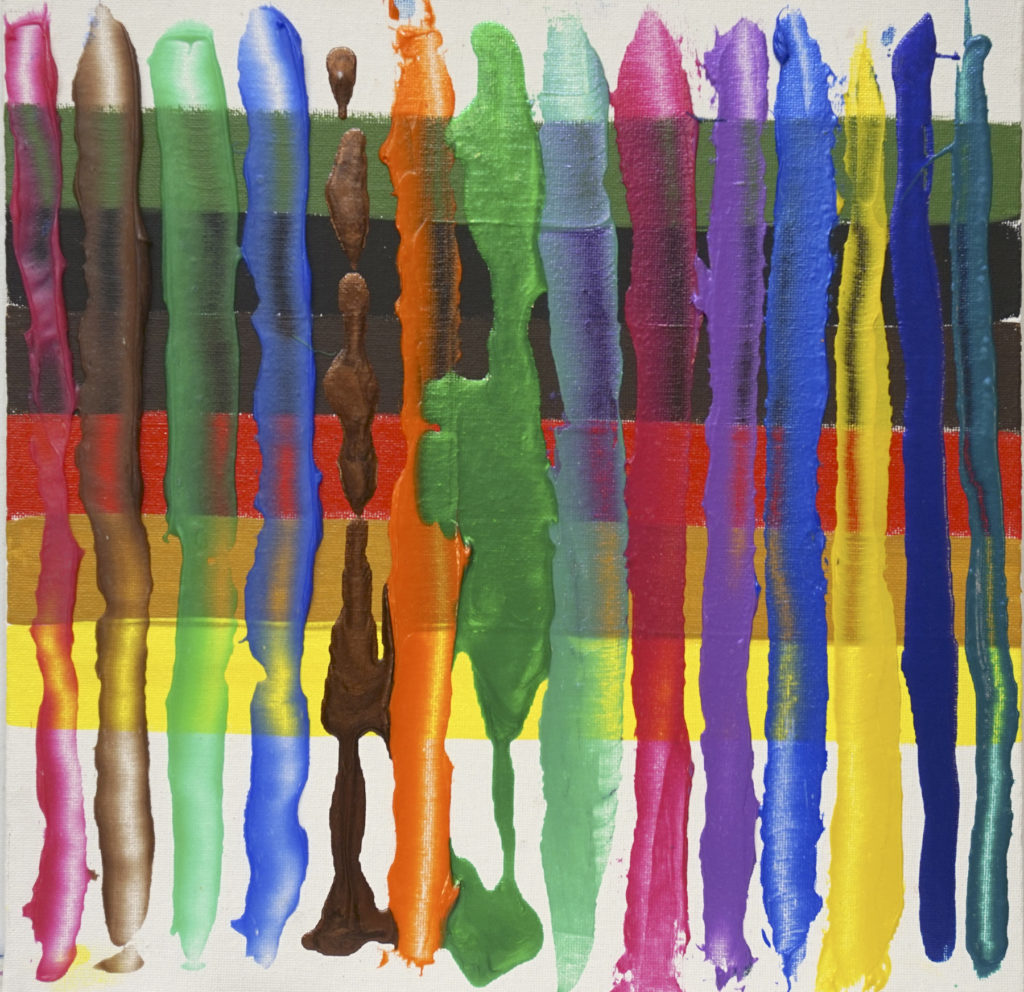
Here is the same sample board with a different light angle showing the full interference and iridescent effects.
Using water and thinly formulated mediums to make washes and thin, pourable mixtures can create a different range of effects that are less easily controlled. Pourable mixtures with Iridescent colors will create interesting flow and tide lines that can have great appeal, but you must be ready for the surprises that come with watermedia and more fluid approaches.
Keep in mind that the layered effects will be greatly influenced by the color and value of what is underneath your Iridescent glazes. Darker values will always yield more intensity, unless your mixture is opaque.
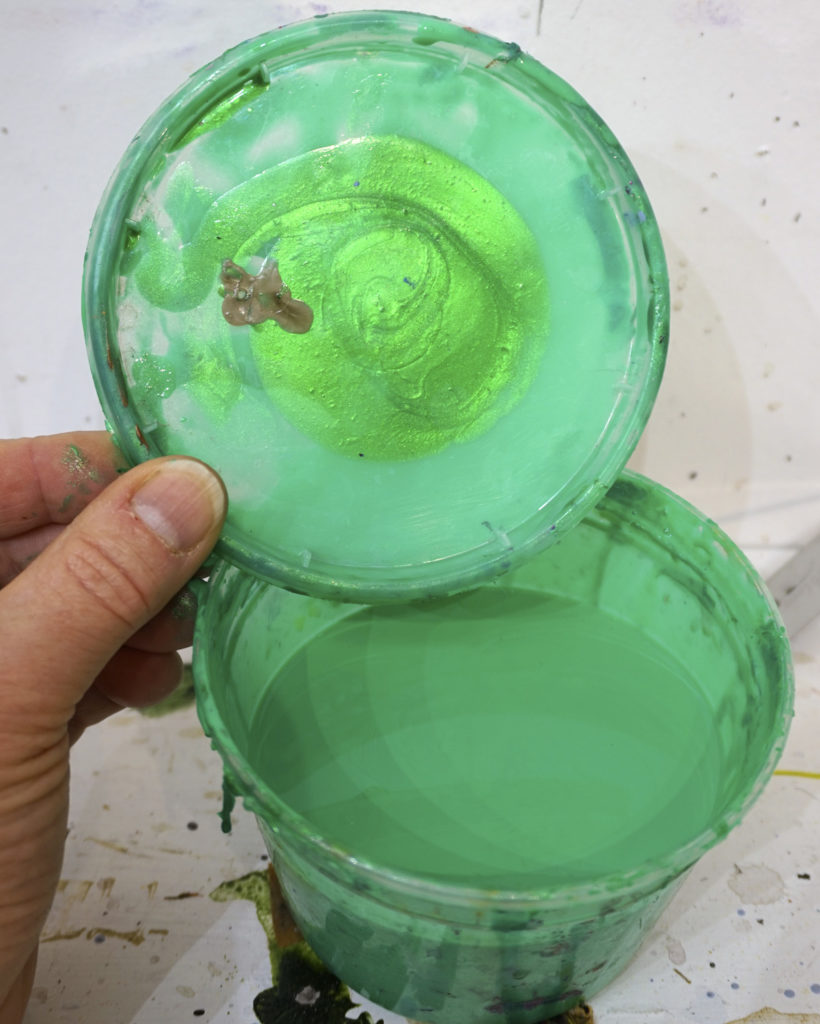
With some testing, playing and experimenting you will find that adding Iridescent and Interference colors to your palette will allow for very new and unique color possibilities, with a range that spans the look of a rich and glowing automotive finish, to a subtle wax like iridescence. Embrace the spectrum, shake up your world, and have fun doing it!
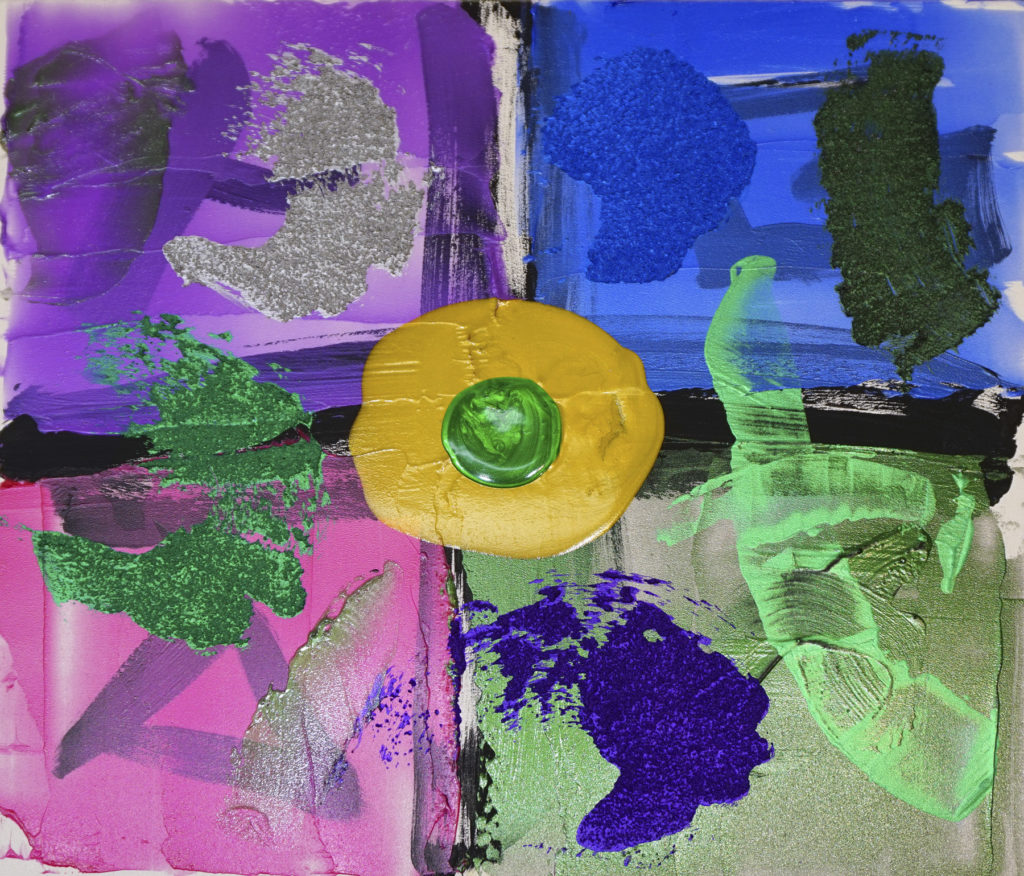
Links to Information About Iridescent and Interference Colors
Interference colors that are presently available: http://www.goldenpaints.com/products/colors/interference-colors
Iridescent Colors: http://www.goldenpaints.com/products/colors/iridescent-colors
Here is a product information sheet on Interference and Iridescent acrylics: http://www.goldenpaints.com/technicalinfo/technicalinfo_iridint
Experimental Color Travel Interference Colors: https://justpaint.org/custom-lab-launches-new-experimental-products/
Experimental Product Review ( special effect colors): https://justpaint.org/golden-custom-lab/
These links show how mixtures with Matte and Semi-Gloss Gels and Mediums can create very translucent, wax like films:
Creating an Encaustic Look with Acrylics: https://justpaint.org/creating-an-encaustic-look-with-acrylics/
Encaustic Effects with Golden Acrylics: http://www.goldenpaints.com/videos/encaustic-effects-with-golden-acrylics
About Scott Bennett
View all posts by Scott Bennett -->Subscribe
Subscribe to the newsletter today!

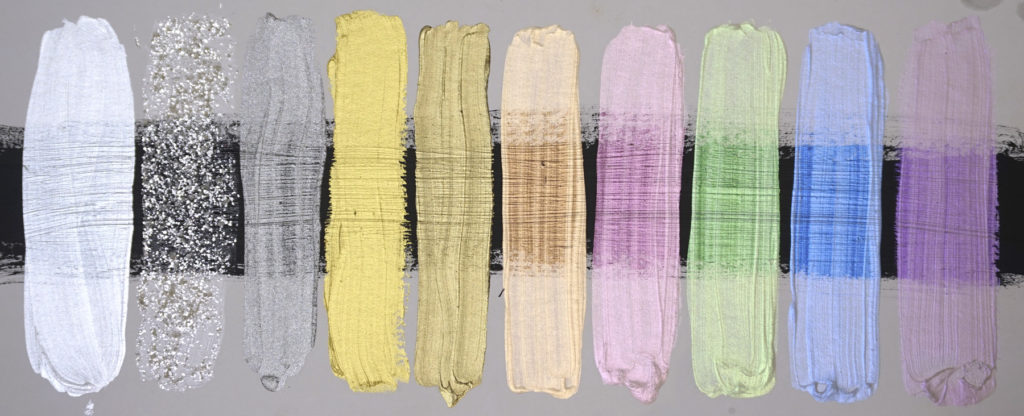
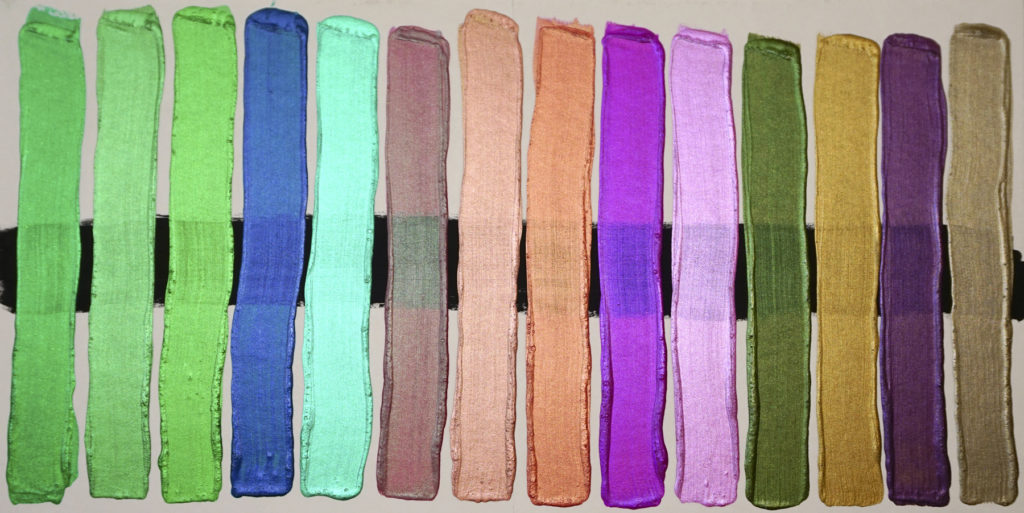

This was a very informative article. I had originally asked to receive print copies, as well as internet, and if I had to choose just one, I’d choose paper. Could you resume sending me the print versions. Thank you.
Diana Ross
8499 Deer Path
West Chester, OH 45069
Hi Diana,
Thank you for your kind comment about my article in Just Paint Online. These shorter online articles do not come out in print form, only online, on our website. Our main newsletter, Just Paint comes out once, and sometimes twice a year as a “hard copy” that we send out to anyone who signs up for it. If you have already signed up, then you will get the next issue that is published. To sign up just click on the “Subscribe” link in the upper left area of the top menu bar here: https://justpaint.org/about-jp/………and fill out the online form.
I hope that is helpful, and if you have any other questions, do not hesitate to call or email us here in tech support! Happy Holidays!…….Scott Bennett
Hello again Diana,
As it turns out, for 2016 we did not publish a printed Just Paint newsletter so that is why you did not receive one. The intended 2016 issue will come out early in 2017, as it kept getting pushed forward due to content and article revisions. So, essentially, we did not publish a Just Paint for 2016. We used to publish two issues a year but will now be going to one a year, typically coming out in the fall. The online articles will be ongoing and fairly regular.
thank you Scott for this article, very informative look forward to trying some mor e of these unique , modern paints
You are most welcome Scott! If any questions come up while using our Iridescent and Interference colors, or any of our products, feel free to call or email us here in Tech Support. Best of luck with your work.
Scott Bennett
Hello Scott;
I’ve been using interference colors for a number of years but recently began application on a large canvas. On this painting I want the interference colors to play a more dominant role and prefer to enhance their performance. What would you suggest as a final varnish on the acrylic painting to achieve this goal?
Thank you, Paul
Hi Paul,
Any glossy sheened Varnish of ours will offer the most clarity and so allow the most light to come through the film, which will be best if you want to simply preserve the full interference effect you now have on your work. Matte or Satin coatings are less than completely clear and so can tend to diminish color chroma and obscure in small degrees. But, the most important factor in terms of having stronger interference effects, involves how you originally used the colors. Use over darker grounds will always tend to increase the strength of the interference effect, as will blending with darker valued colors. Again, I would refer to to my article above and to our literature and videos on our website for more details. Best of luck with your work!
Can a painting with iridescent and interference colors or medium be varnished, and will the varnish reduce or enhance the effect?
Hi Danielle,
Yes, Iridescent and Interference colors can be varnished, just like any other color. And in a similar way, the particular varnish sheen will affect the aesthetics of the colors. Glossy varnishes or really any glossy and more translucent film will tend to darken colors, and allow more light to pass through to the color. This tends to enhance colors to some degree, including the Iridescent/Interference colors, whereas Matte or Satin Varnishes or coatings will tend to subdue and lighten color, due to the matting solids which block some of the light coming through. And again, this includes Iridescent and Interference colors. Sometimes this subtle lessening of the effect can be desirable, and some artists will blend the colors with Semi-Gloss or Matte mediums to create this effect. The bottom line is you must test to see the inevitable changes that any translucent coating on your work will create.
I am so so glad to have happened on this article I have been playing with iridescent white from your collection and I now have a better idea of what to do to get optimum color values! ☺️
Hi Sharon,
And we are happy to hear that you are reading our articles and finding them useful! while we do not have an “Iridescent White”, we assume you mean our Iridescent Pearl, which certainly could pass for an Iridescent White. Best of luck with your work and don’t hesitate to contact us at [email protected] if you have more questions.
Hi, interesting article thanks. I was wondering will acrylic paint iridescent and interference effects work on a plastic boat superstructure subject to sea spray and sunlight UV exposure if I apply a marine varnish layer?
Hello Bill,
Our Iridescent and Interference colors are made from mica particles coated with Titanium Dioxide and the colors and reflective effects are extremely lightfast as they are based in refraction and reflection of specific wavelengths of light, rather than the chemical and molecular structures that traditional pigments color effects are based on. Of course if you add in traditional pigments suitable for exterior use, you will most definitely need a very good UV light blocking capability along with the marine quality variety topcoat. It will be the quality and number of coats of the topcoat you apply that will create the physical surface protection needed,..and not the acrylic paints you apply,…not the paints themselves. So while the color effects of the Iridescent and Interference colors will last, the acrylic film itself requires a topcoat that will protect them from the sea water and other physical actions from this kind of functional use.
If you intend on adding in other colors then refer to the list of best Exterior Pigments found in our Exterior Mural and Outdoor Sculpture tech sheets found here:
Exterior Murals: http://www.goldenpaints.com/technicalinfo/technicalinfo_murals
Selecting the Best Exterior Mural Pigments: https://justpaint.org/selecting-the-best-exterior-mural-pigments/
Outdoor Fiberglas Animal Sculptures: http://www.goldenpaints.com/technicalinfo/technicalinfo_fiberglass
Best of luck with your project!
Hello,
I am particularly interested in creating g a pourable, “milk like” consistency palette of interference colours. Do you have any recommendations on ratios of water vs. acrylic paint + interference paint? I need a good baseline or starting point to begin from. I would be pouring these “Interference” mixtures over darker colours of regular acrylic paint already on the canvas.
Any information or “recipes” you could provide would be greatly appreciated.
This article was well written and informative.
Thank you.
Brooke Palmer.
Hi Brooke,
Our best advice for mixing a pourable “milk like” consistency acrylic paint is to use our GAC 800 blended with our Fluid Acrylics in a 10:1 ratio of 10 parts GAC 800 to approximately 1 part Fluid Acrylic. While you can certainly thin our thicker Heavy Body Acrylics with a little water, these thinned mixtures will tend to form crazes as they dry. Some artists like those surface “defects”, but if you are looking for smoother surfaces, then use the GAC 800 and paint mixture with No water added. Water additions tend to increase the potential for surface defects.
If you go back to my article and scroll down to the bottom, you’ll see a photo of an open container showing a mixture of GAC 800, some green paint and some Interference Green.
Here are some links with more information for you:
Understanding the Techniques of Pouring Acrylics: https://justpaint.org/understanding-the-techniques-of-pouring-acrylics/
Paint Additions into GAC 800 for Pouring Applications: https://justpaint.org/paint-additions-into-gac-800-for-pouring-applications/
Color Pouring: http://www.goldenpaints.com/products/medium-gels-pastes/color-pouring
Big Paint Pour using GAC 800: https://www.youtube.com/watch?v=3RsoxOkMOZg
Best of luck with your work!
Great article thank you so much I have just brought some interference paints and your article gives me the confidence in how best to use them
Hi Gayle,
You are most welcome, and thanks so much for your kind compliment. Iridescent and Interference colors can be quite tricky to use effectively in paintings and initially decades ago when we first came out with them, I never imagined that I would use them in the ways I am now. Some of my favorite uses are quite subtle often, where there is a blend of iridescent color, regular pigment color and mediums to create a very nuanced color effect. Take some time to create different mixtures and you will find your own way with these special colors.
A glossy clearcoat, varnish or topcoat will allow the iridescent effects to be seen clearly. In some cases it can enhance the effect. Any coating changes the way the colors and values appear so testing is recommended so you can see these changes first. For any exterior use of our acrylic paints it is best to have a topcoat or varnish that has UV filters, but the specific choice of clearcoat should also be selected according to the use and function of the surface or object you are coating. It would typically not be “oil based” but could be a polyurethane or urethane type coating. For murals we recommend our MSA Varnish over our Isolation Coat, but for any functional object or surface that may be handled regularly or be exposed to standing water,..another type of topcoat would need to be used. Email us at [email protected] for more information.
I’m now bursting with ideas, I’ve just ordered the interference violet fluid and I can’t wait to mix with different paints/inks, especially transparent quin red, transparent shading gray, zinc white, anthraquin blue, matte effects and a range of opacities and background colours. I’ll probably need to re-read this wonderful article again when I get it, thank you!